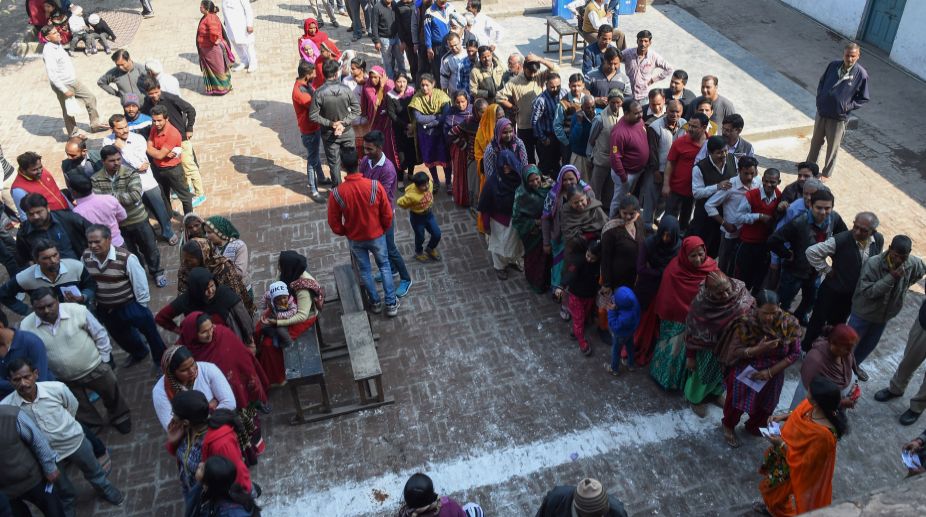EVMs testament to India’s commitment to sanctity of democratic process: Jaishankar
He said the goal is to leave no one behind and let everyone fully participate in the electoral process.

Elections in India (PHOTO: AFP)
Electronic Voting Machines (EVMs) have become a bone of contention after the results of the Assembly elections in five states were declared last Saturday and the BSP president Mayawati alleged tampering. The Congress party and the Aam Aadmi Party (AAP) have called for a probe into her allegation. Social media too is abuzz with messages and videos showing how the machines can be allegedly manipulated to sway the votes in favour of a particular candidate.
Overnight, several videos on Whatsapp have surfaced wherein people can be seen explaining the "mechanism" on how to alter the votes polled for a candidate in another candidate's favour. Several similar posts and articles are doing the rounds on Facebook.
BBC added fuel to the fire when it shared a 2010 article on how 'US "Scientists" hack India Electronic Machines' . The article details how scientists at a US university say they have developed a technique to hack into Indian electronic voting machines. While the article was posted on the BBC website a day after the election results were declared, it drew considerable flak from users on Facebook who criticised the website for its 'irresponsible' act of sharing an article with a "click bait" headline just to grab eyeballs.
Advertisement
Amid all this frenzy, the Election Commission of India has issued statements clarifying how the entire process is transparent and fool proof and tampering with the EVMs is a far-fetched thing given the checks and balances in place. For instance, the EVMs undergo the process of randomisation wherein which machine will go to which constituency and to which booth is not known to anyone till the last moment. Similarly, before the polling starts, mock polling takes place in the presence of representatives of all the political parties and then each of these machines are tested and a satisfactory report is generated and only after that polling begins.
However, all these checks and balances still do not ensure a fool proof system if experts are to be believed.
Pranesh Prakash, Policy Director for The Centre for Internet and Society, a non-profit organisation that undertakes interdisciplinary research on internet and digital technologies from policy and academic perspectives, said: "The Electronic Voting Machines used in India are the simplest, with no large operating system requirements and are not networked. Thus, from a software design perspective, these are really good and the chances of these being tampered with are bleaker. However it doesn't mean these are fool proof. Most of the developed countries do not trust these machines and these are definitely not secure enough for democratic elections.
"While there are many advantages of using EVMs in the electoral process over the traditional ballot papers, still there are many ways in which one can tamper with these machines without any technical ingenuity. The best way is to make use of the EVMs and ensure that the Voter Verified Paper Audit Trail (VVPAT) are effectively utilised to make it an overall effective system".
Recently, the Supreme Court had mandated that VVPAT machines should be used in all the polls and thus the Election Commission had installed VVPAT machines in several constituencies. However, not sure of the efficacy of this system, the Election Commission had itself raised apprehensions regarding performance of the paper-trail machine, which gives a receipt to the voter, verifying the vote went in favour of the candidate against whose name the button was pressed on the electronic voting machine.
Advertisement